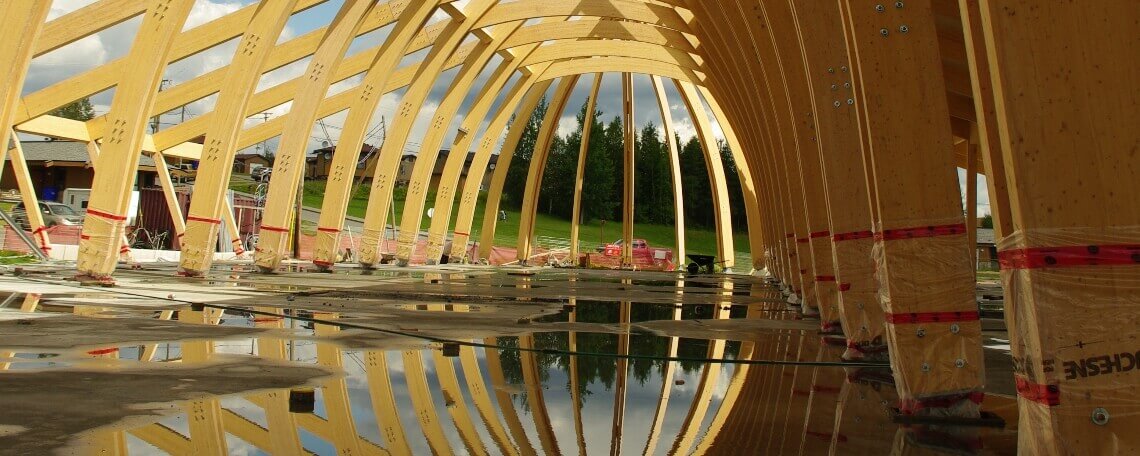Our vision for the future of residential construction

Industrialised construction for the affordable housing challenge
The main challenge our industry currently faces is tripling the annual housing production in Quebec, in Canada, and across all countries, whether developed or developing, on every continent. This isn't just about gradually increasing current levels to reach a tripling in 10 years—no, our governments want to triple it right now, this year (2024 at the latest—oops, too late, we missed the boat; it’s already 2025 and it hasn’t happened). Imagine tripling the number of electrical contractors overnight—tripling the number of electricians—that's... mmm... quite the challenge.
You want to triple? Would you settle for just doubling? How about a plan that actually makes sense first?
We know there aren't enough people to do the work, and bringing in more immigrants means more housing needs, more resentment, more social problems, and we already have enough of that. So, we need to change the system. Some countries have started to industrialize the construction process with stackable modules on-site like in a YouTube video from China — seems like the solution, right? Sure, let’s use robots and mega-factories, and churn out these things like sausages; buildings will be up in a few days.
They tried this in the UK, and they’re making slow progress (no doubling or tripling, of course), but they realized it involves huge investments with the resulting enormous monthly financing and rental costs. It works well until interest rates rise and property developers go into hibernation. Then, most of the big factories shut down. Yes, bankruptcy.
So, what we really need from the governments is a system that offers stability to these factories. It seems no one can control interest rates, so how about very long-term government-backed financing for the cost of the factories, along with guaranteed long-term contracts for the supply of housing units (with penalties for the government if the next elected politicians cancel the contract), so that those who can actually do the job don’t have to worry about going bankrupt when the market goes through its inevitable cycle.
We also need guidelines on what 700,000 affordable housing units would look like for Quebec, so we don’t have to go through the 6 to 18 months of permitting processes that many cities impose. We need pre-approved parameters on density, appearance, apartment sizes, etc., so we don’t have to go through iterations with municipal authorities, who no longer want to discuss project-by-project — at the moment they say, "Submit your plans and we'll get back to you... eventually... and you can iterate a few times, and pay your professionals to redo the plans... over and over..." (Actually, they don’t say all that; I added the words they were only thinking.)
But we also need affordable land in areas where people would be happy to live, close to where they would be happy to work. And companies capable of buying that land and financing the construction, even when the market slows down.
So, what do we need in total?
- Land to build in areas where people are happy to live and work,
- Guidelines for acceptable buildings and the housing units within those buildings, from which each factory can develop its own standardized catalog of units,
- A streamlined permitting process,
- Financing with long-term fixed interest rates for factory investment,
- Financing with long-term fixed interest rates for the real estate side (land, modules, transport, installation, on-site work),
- Conglomerate companies to encompass the process from land searching to property management,
- Lots of robots.
Douglas has been in the modular construction field since 2005. We’ve designed over 1,000 modules with more than 1,700 units, for two types of projects: affordable wood-framed housing and modernized cross-laminated timber (CLT) mining camps, what DeBeers calls "the mining camp of the future." A large part of our engineering has focused on interconnecting modules and electrical/mechanical/sprinkler connections. A successful project must be assembled on-site quickly and easily, and we’ve developed fast and easy methods to achieve that.
Architecture needs to be simple but not boring or monotonous, so the system requires a bit of aesthetic flexibility to provide variations from one project to another without disrupting the manufacturing process. But no customization inside the units. So, rentals are better than condos. No pre-sales team bending over backward for customization.
Now, if and when we can organize all this, we might be able to develop the industry in the coming years. But how many factories will we need?
Just in the province of Quebec, by the end of 2023 we were talking about needing an additional 700,000 units by 2030 ("additional" meaning more than we're already producing). That was about 100,000 per year. Now, at the beginning of 2025, with nothing done in 2024, we’re looking at 120,000 per year.
If a small factory, maybe 50,000 square feet in size, costs about 5 million CAD (excluding the building) and produces around 200 modules a year, let’s say that represents 200 apartments, then we need 600 of these factories. Total factory investment of 3 billion dollars. And if each apartment costs about 300 k$ (including land, indirect costs, etc.), the total construction cost is 36 billion dollars. Per year. Is the Quebec banking system ready to shuffle that many eggs from other baskets into the construction basket?
If we opt instead for mega-factories producing 1,000 units a year, we only need 120 factories, but the total figures remain the same. And we still haven’t found the first visionary willing to build one, let alone 120.
So, we are far from the governments' wish lists. But if they can create the right environment, we have the technology ready. Douglas is currently helping to set up the factory concept, with experienced folks in California, for factories in British Columbia and the U.S., and eventually in Quebec.

